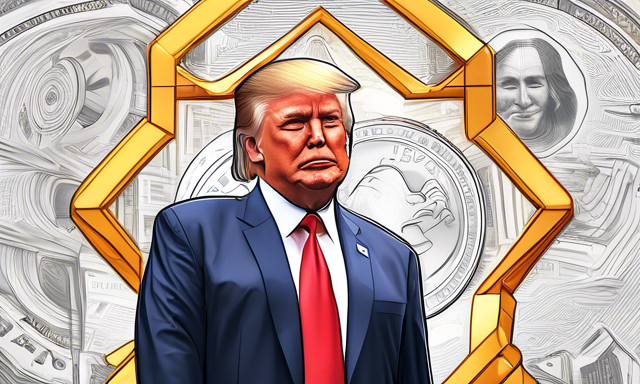S&P 500 Performance Slows as Financial Institutions and Bitcoin Face Challenges 📉
This week marked a shift in the resilience of the S&P 500 after several weeks of gains. The rally began to falter due to significant declines in the banking sector and turbulence in the cryptocurrency market, particularly Bitcoin. Investors closely monitor these developments as they navigate an environment characterized by election uncertainties and economic shifts.
Market Sentiment Shifts as Banks Struggle 🏦
As the trading week drew to a close, indicators pointed to a potential downturn in Wall Street equities. The S&P 500 appeared to be on track for its first weekly drop since early September, with financial stocks bearing the brunt of the pressure. The ongoing performance of the Magnificent Seven—by which many major indices have been upheld—remains a pivotal focus for traders. Financials, however, represent the weakest link in this chain, exacerbating market volatility.
This week saw the yield curve shifting slightly higher, particularly with ten-year Treasury yields rising by 13 basis points. In contrast, gold prices soared, continuing their upward trajectory. The correlation between asset classes presents intriguing dynamics, particularly as risk assets appear to be underperforming.
Gold’s Ascent Amid Economic Turbulence ⬆️
Gold has exhibited remarkable resilience, attributed partly to macroeconomic factors and rising geopolitical tensions. Analysts observe that the spike in gold prices may transcend conventional metrics, hinting that underlying sentiment and external uncertainties have a stronger influence on market behavior than economic logic typically suggests.
Consumer sentiment readings from the University of Michigan indicate an uptick in optimism among households regarding purchasing conditions. This positive sentiment surrounds labor market prospects, but asset correlations warrant scrutiny. Notably, growth stocks continue to outperform their value counterparts, driven by favorable earnings trends in the technology sector.
Short-Term Market Dynamics and Long-Term Implications ⚖️
Market analysts anticipate that the ongoing electoral atmosphere may impede immediate economic outlooks. There exists both uncertainty regarding potential policy shifts post-election and a sense that fundamental financial strategies will be significantly influenced by the election’s outcome. Current polling suggests a closely contested race, leading many investors to seek refuge in stocks perceived as safer bets.
With economic data signaling strength in the labor market and revisions of job numbers suggesting a more robust employment landscape, market participants remain vigilant. Despite concerns surrounding monetary policy adjustments by the Federal Reserve, expectations of significant rate changes appear subdued in the near term.
The Bigger Picture: Global Connections and Inflation 🌍
Discussions surrounding global economic interconnectedness reveal growing skepticism regarding the stability of various trading zones. Significant changes are underway, with some regions, notably Russia and China, seeking to redefine their economic paths. Increased transactions detached from Western influences could lead to greater systemic uncertainty.
This fragmentation within global markets raises fundamental inquiries about the sustainability of inflationary trends. The demand for domestic manufacturing may increase as businesses recalibrate to face a changing geopolitical landscape. As economies grapple with unwinding global supply chains, domestic policies will likely evolve to align with this new reality.
Wrap-Up: An Uncertain Path Ahead 🛤️
As we move towards the close of the trading week, regional markets exhibit mixed signs, with the S&P 500 reflecting cautious trading behavior amid a backdrop of geopolitical and economic challenges. Investors are poised for volatility driven by upcoming earnings reports and crucial labor market data. The preceding weeks’ gains might have set the stage for a broader reevaluation of equity investments, particularly as market conditions become increasingly intricate.
The next week holds potential revelations, with critical data from various sectors anticipated. As the election approaches, the implications for fiscal policies and market strategies will feature prominently on investor radars, impacting decisions across all asset classes.
Hot Take: Navigating the Uncertainties Ahead 🔍
The recent slowdown in the S&P 500 underscores how rapidly market dynamics can shift. Both macroeconomic factors and geopolitical considerations are leading to cautious sentiment among investors. The interplay of different asset classes—whether observing gold’s continued rise or Bitcoin’s turbulence—demonstrates the complexity of the current financial landscape. As a result, participants in the market will need to stay nimble and informed to navigate these challenges successfully.





 By
By
 By
By
 By
By
 By
By
 By
By
 By
By